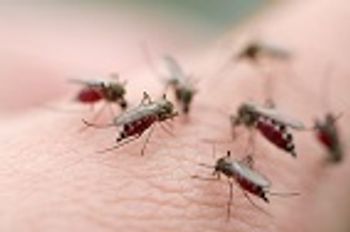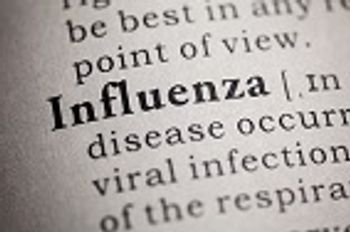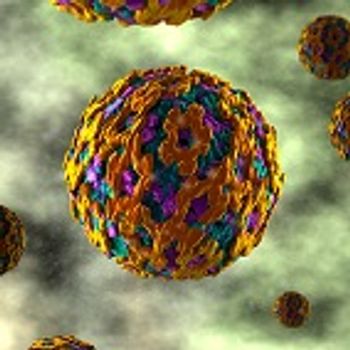
The Zika virus has left many scientists and doctors “astonished,” according to Margaret Chan, MD, MPH, director-general of WHO.

The Zika virus has left many scientists and doctors “astonished,” according to Margaret Chan, MD, MPH, director-general of WHO.

The level of hemagglutination inhibition (HAI) used as the traditional gold standard for evaluating influenza vaccines in the United States and European Union may not actually be the best predictor of protection from influenza virus-induced disease.

Although virtually eradicated in some parts of the developed world, spinal meningitis remains a significant healthcare challenge in the so-called “African meningitis belt,” a region of 26 countries that stretches from Senegal to Ethiopia.

Researchers have identified US Food and Drug Administration (FDA)-approved drugs that could help in the fight against post-treatment Lyme disease syndrome (PTLDS).

Researchers from the department of pathology at the Beth Israel Deaconess Medical Center in Boston developed and validated a high-throughput screen (HTS) that could detect antimicrobial agents with the ability to restore carbapenem susceptibility to resistant strains, as well as those that target CRE directly.

Researchers have reported the results of an investigation of the role of an immune signaling pathway that may have an important role in mediating the immune response to influenza A virus infection.

Researchers in the United Kingdom reported results of an in vitro study evaluating a urinary catheter that visibly warns health care providers when an infection is developing.

In an address to the 69th annual World Health Assembly, Margaret Chan, MD, MPH, director-general of the World Health Organization (WHO), discussed the impending threat of yellow fever.

Cutting-edge technologies help public health professionals detect and respond to infectious disease outbreaks more rapidly and effectively than traditional methods. The Centers for Disease Control and Prevention’s Epidemic Intelligence Service (EIS) officers presented a few of their resources to their colleagues in a special session on May 3, Using Advanced Molecular Tools to Direct Public Health Action, at the 65th Annual EIS Conference in Atlanta, Georgia.

“Vector-borne diseases are among the most complex of all infectious diseases to prevent and control. Not only is it difficult to predict the habits of mosquitoes, ticks, and fleas, but most vector-borne viruses or bacteria infect animals as well as humans,” according to the Centers for Disease Control and Prevention (CDC).

In a recent publication, Catherine F. Decker, MD, from Walter Reed National Military Medical Center, Bethesda, Maryland, discussed some infections that have recently emerged as important sexually transmitted diseases.

As of today, the CDC has changed the reporting criteria for Zika infection in pregnant women, to include those who are asymptomatic but test positive for a flavivirus.

This new approach could hold promise as a novel method of vaccinating against herpes simplex-2 virus (HSV-2).

The consequences of not understanding the actual rate of asymptomatic influenza infection can be grave, as influenza virus infection of the respiratory tract has been shown to result in severe disease and complications, including pneumonia, shock, renal failure, encephalopathy, and multiorgan dysfunction, which can be lethal.

The findings of a recent study coordinated by the Centers for Disease Control and Prevention (CDC) and local departments of health in southern Texas highlight the risk for localized outbreaks of Dengue fever in the region and other areas of the United States with similar climatic and environmental conditions. This is particularly alarming as Texas is already well-within range of an outbreak of another vector-borne illness: Zika virus.

Researchers at the University of Texas Medical Branch (UTMB) at Galveston have successfully cloned the Zika virus strain.

A recent study has demonstrated that, although annual HIV infection and transmission rates declined in the United States over the last 5 years, they fell short of the goals outlined in the US National HIV/AIDS Strategy.

“An outbreak anywhere is a risk everywhere,” according to the Centers for Disease Control and Prevention (CDC). Officers of the CDC’s Epidemic Intelligence Service (EIS) are studying several emerging infections – those that have recently increased or show signs of increasing soon – and five researchers presented their results May 4 in the Emerging Infections session of the 65th Annual Epidemic Intelligence Service (EIS) Conference in Atlanta, Georgia.

The US government must allocate additional resources toward global research and development (R&D) efforts working toward solutions for historically “neglected” diseases such as malaria, tuberculosis, and HIV/AIDS in order to meet the challenges posed by them, a new report has concluded.

Several school districts in India are being asked to take proactive steps to contain Dengue fever locally as monsoon season approaches.

The Centers for Disease Control and Prevention (CDC) recently announced that it has expanded the use of a disease identification tool to help speed disease recognition in laboratories.

An estimated 722,000 healthcare-associated infections occurred in acute care hospitals in the United States in 2011, and roughly 75,000 patients who acquired them died while still in the hospital, according to the Centers for Disease Control and Prevention (CDC).

On May 16, 2016, the Australian Olympic Committee (AOC) announced that the country’s Olympic team members will receive Dual Protect VivaGel condoms, the world’s only antiviral condom, for the 2016 Olympic Games in Rio de Janeiro.

The Senate has voted to grant $1.2 billion in funding to fight the impending local transmission of the Zika virus in the United States.

In early April the World Health Organization (WHO) announced that most provinces in Angola have experienced a yellow fever outbreak. Now, scientists are calling this the country’s worst epidemic since 1986, urging WHO to take action.

New legislation designed to bolster food safety regulations in the United States largely hands increased power to state agencies overseeing the farming sector.

A recent study has shown that human immunodeficiency virus (HIV) enters cells throughout the entire female reproductive tract from the labia to the ovary—not just in the cervix, as previously thought.

A recent study has shown that stress and depression in adolescent females are linked to human papillomavirus (HPV)-related health problems—in particular, whether the viral infection persists long enough to increase the risk of cervical cancer.

Researchers from the National Infection Service at Public Health England (PHE) in the UK may have identified the perfect platform for trials of future vaccines and antivirals for the management of Zika.

Seven monkeys in Ceará, Brazil have tested positive for the Zika virus.